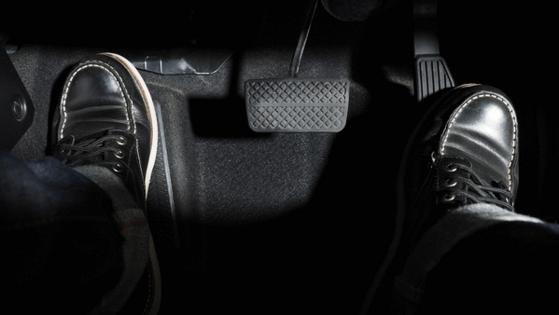Motormouth: What about my left foot?
Published in Automotive News
Q: I think there is an easy solution to the left foot problem. I bought my first car, a 1934 Ford sedan, in about 1953. I have had several cars since then of course, most all of them were manual shifters. In fact, I just sold my most recent manual, a 1967 Porsche 912 that my wife and I bought new. We are left with a 2002 Toyota 4Runner that is of course automatic. I have been driving the two cars until now and I had no problems going from a manual to an automatic transmission, back and forth. What was my solution? Start using your left foot for the brake pedal and it doesn’t leave you with an idle foot. I find it is actually a better way to drive an automatic!
J.R., The Villages, Florida
A: I advise against using your left foot for the brake for three reasons. You may unintentionally rest your foot on the pedal. Traffic behind you may think you’re braking and react as such. The other is that riding the brakes causes premature wear. Third, it confuses the engine control module and that usually causes reduced fuel economy. Unless you’re on the racetrack and use trail braking, keep your left foot away from the brake pedal.
Q: My 2024 Subaru TPMS recently showed a very slow leak in my front passenger tire. The dealer noticed a “nail” in the tire and recommended replacement, but the tire would take a week to retrieve. Meanwhile I drove on that leaking tire, but it was placed in the rear. When the leaking tire was replaced, this nail was a small screw not even 1.5 centimeters long. I thought steel belted tires could resist something this small. Is this common?
D.A., Arlington Heights, Illinois
A: The uncommon is surprisingly common when it comes to tires. When getting an oil change recently, the shop called me into the service bay to see a huge gash, down to the cords, in the left rear tire. So, yeah, it’s more common than most drivers think. Steel belts are not armors to protect the tire.
Q: I have a 2016 Mitsubishi Outlander Sport with 80,000 miles. My local mechanic has recommended replacing my spark plugs even though the owner’s manual states 105,000. I asked another trusted mechanic what his thoughts were because I felt I was being upsold by the original guy. He kind of hesitated to say that waiting until the recommended mileage was obtained could possibly make removal of plugs very difficult and more costly. The car runs fantastic.
B.B., Winthrop Harbor, Illinois
A: I would change the plugs if some other service would make it easier to do so. But 100,000 to 105,00 is typically when the plugs should be swapped out. Ride on until then.
Q: I want to get an EV. My husband has run a dedicated power line out to the garage for one. But he refuses to put in a receptacle because he says the industry hasn’t standardized them yet. Catch-22: How can I get an EV without the receptacle to plug it in? Still driving an 11-year-old gas-powered SUV.
B.M., Gladstone Park, Illinois
A: Electric vehicles and hybrids come with the proper charging cable to fit the vehicle. But the other end of the cable is standard for 120-volt service. If you chose to go with 240-volt charging, you will need to buy a Level 2 charger at extra cost. But 240-volt charging is much quicker.
©2024 Tribune Content Agency, LLC.








Comments